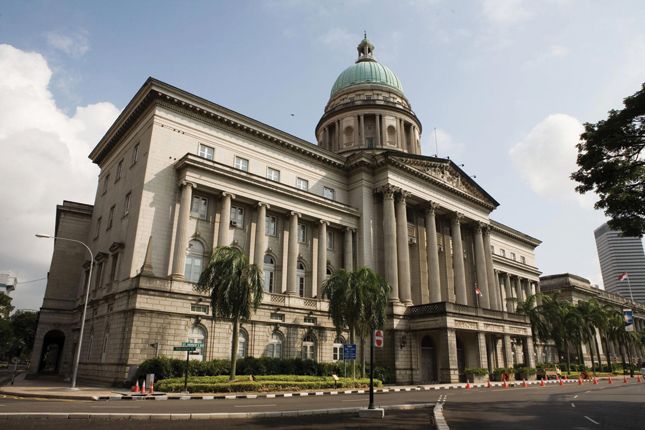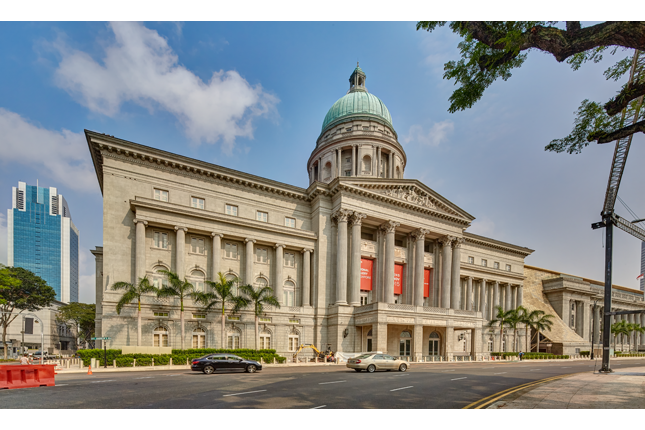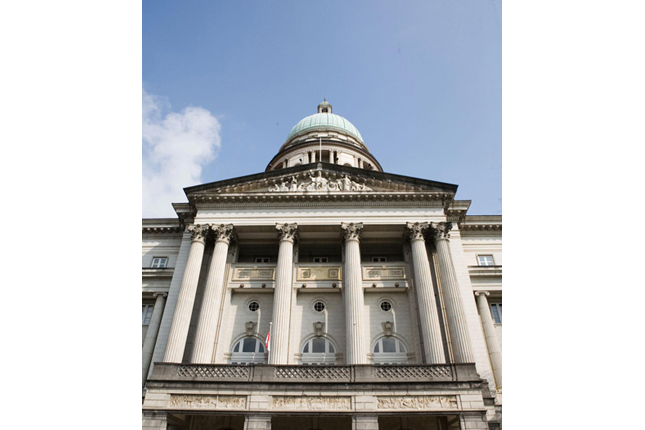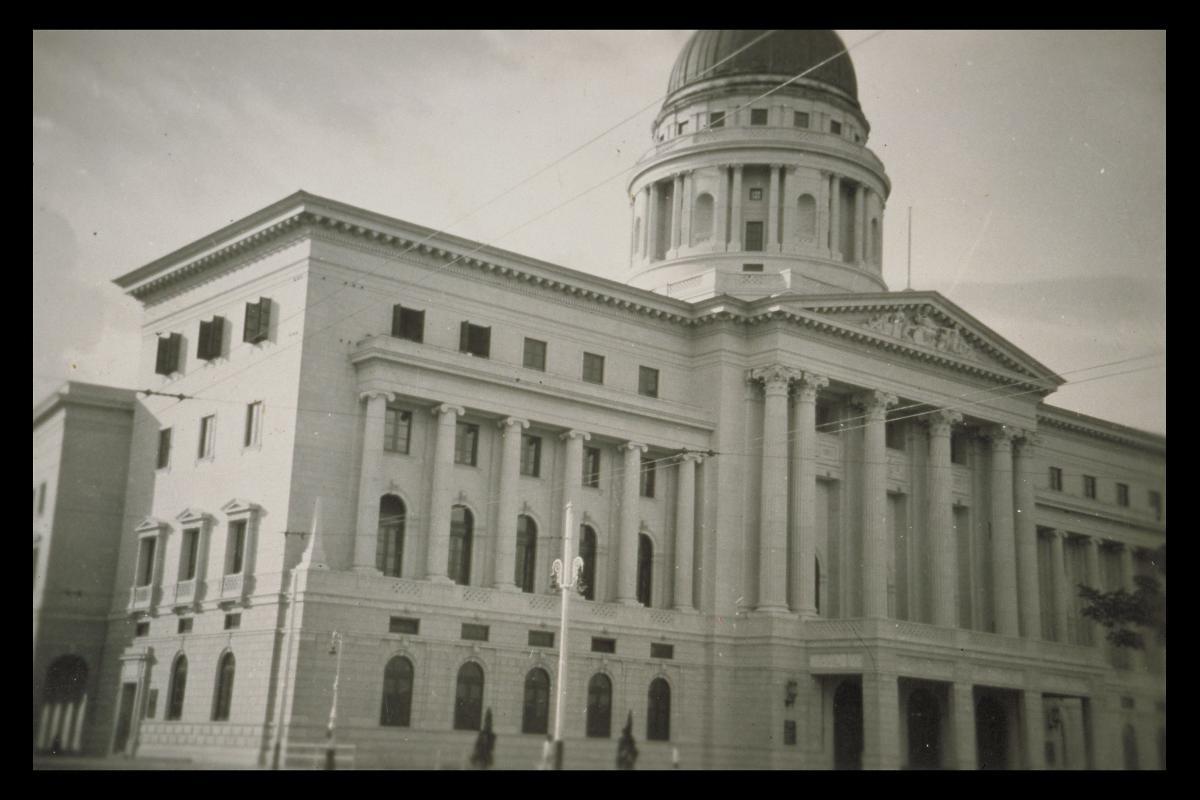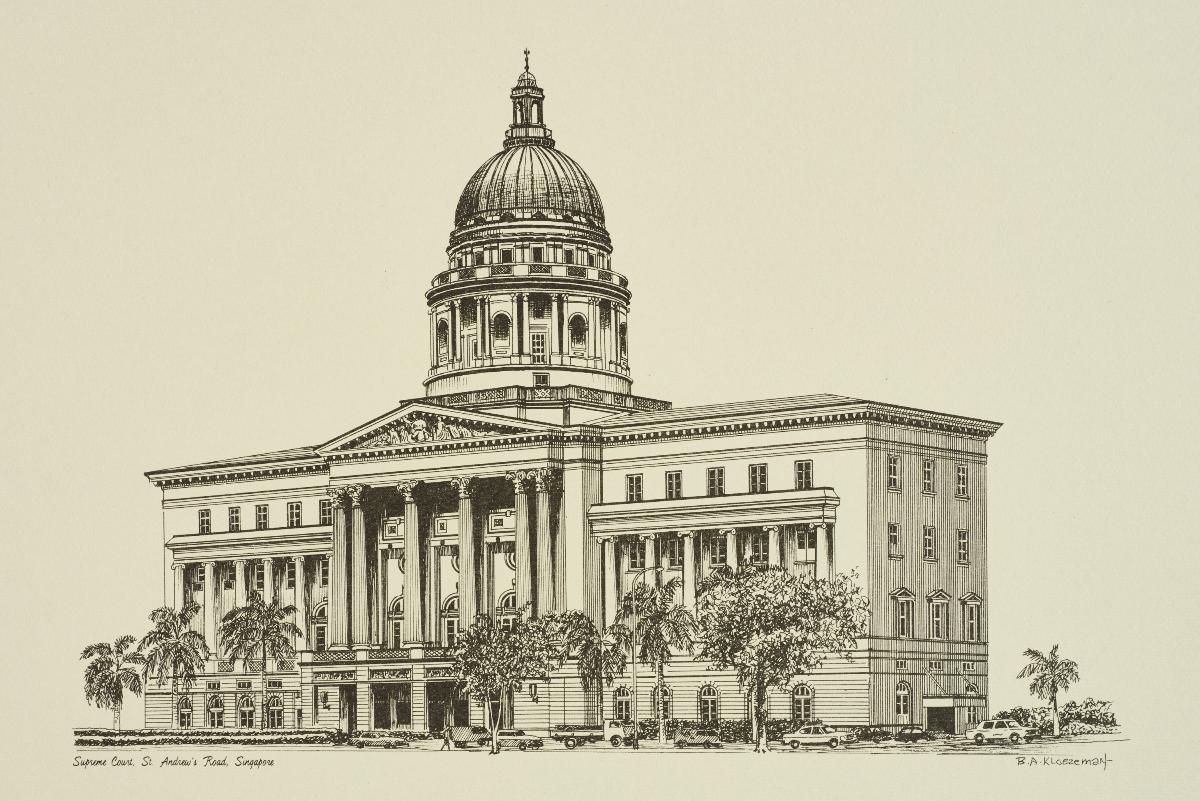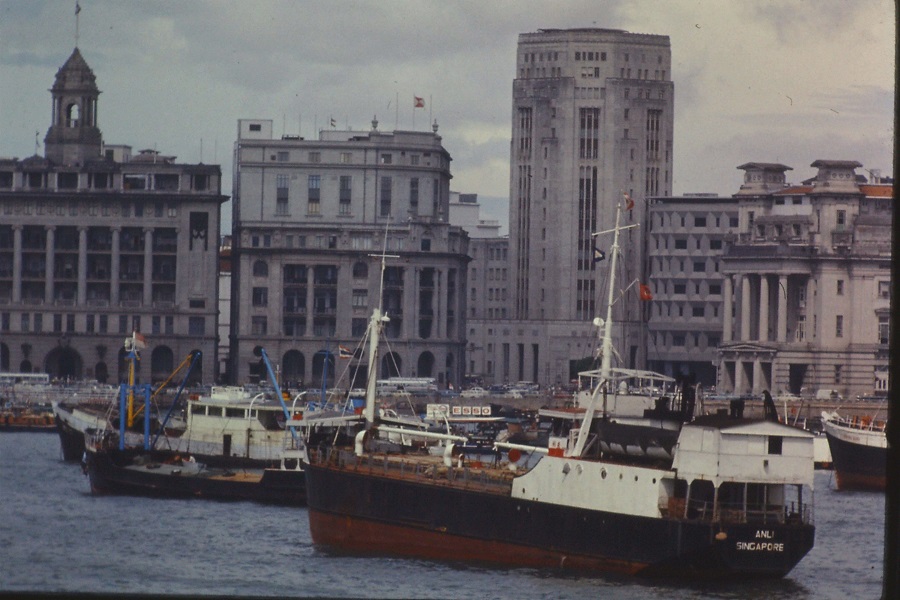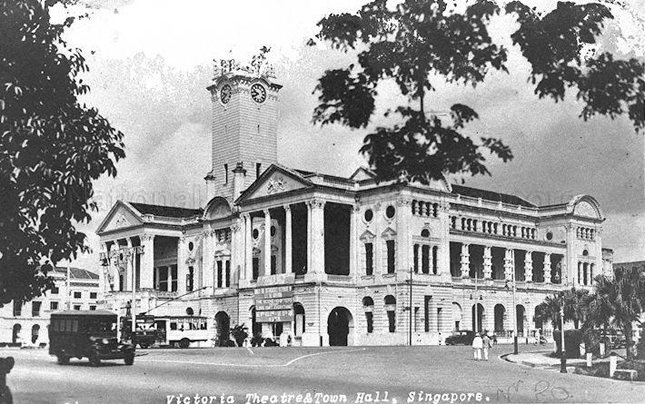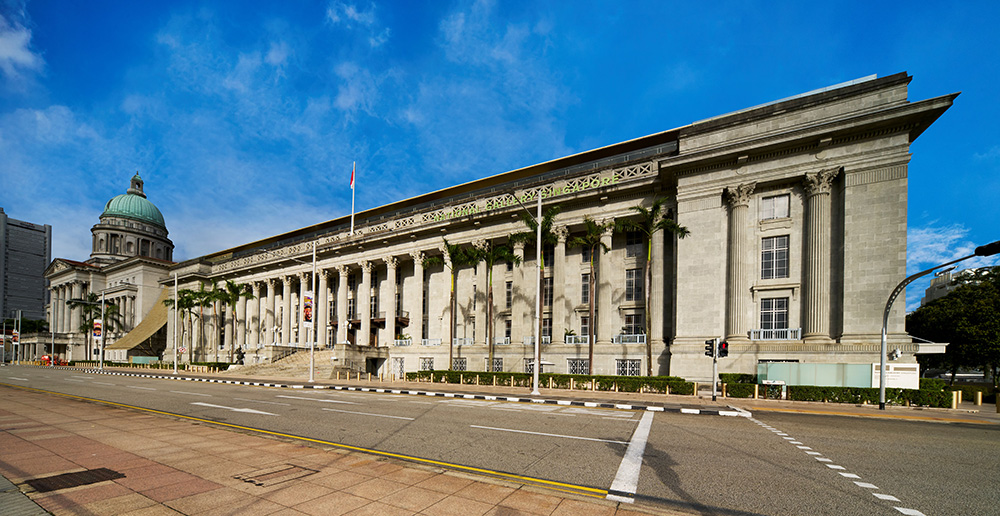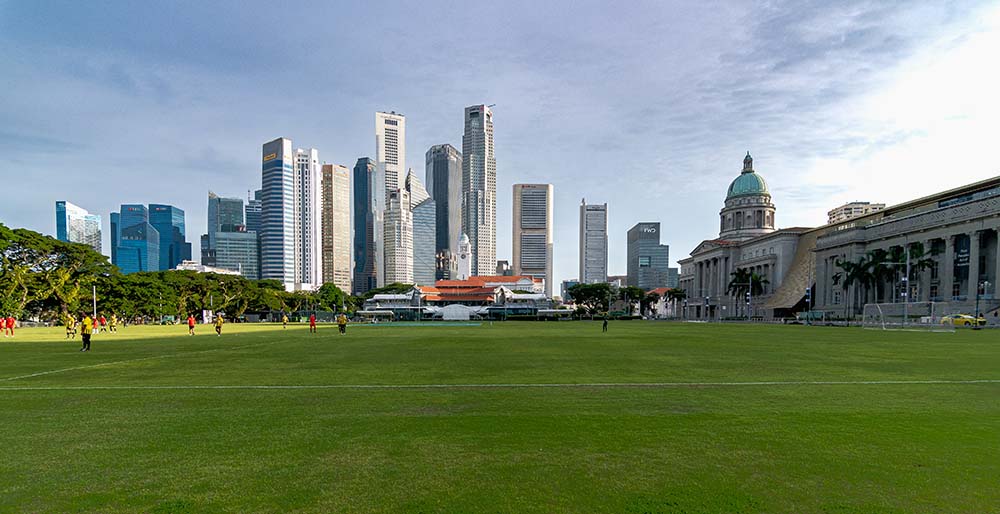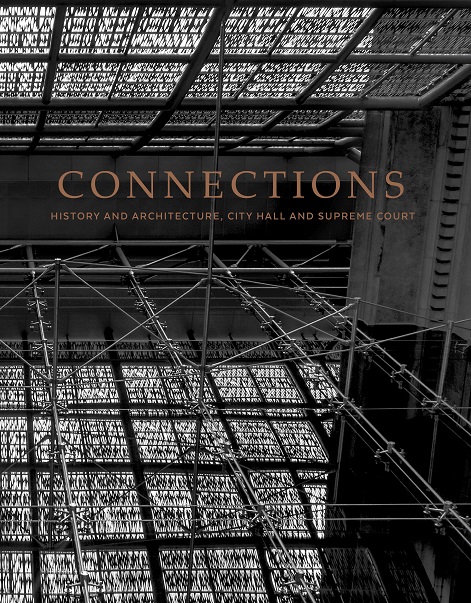Amidst the colonial buildings and skyscrapers of the Civic District rises the copper-green dome of the Former Supreme Court. Once housing the highest court in Singapore, the Former Supreme Court is situated next to the Former City Hall in front of the Padang. It is also the last grand Neoclassical building constructed during Singapore’s colonial era.
New Courthouse
Prior to the construction of the Former Supreme Court, the Supreme Court was housed first in the Former Parliament House and then the Former Empress Place Building. In 1934, the colonial government acquired the site of Hotel de l’Europe, a luxurious hotel that was forced to shut down in 1932. The vacated hotel building was demolished and construction of the Former Supreme Court building commenced in April 1936. However, progress was slow as steel delivery was delayed due to shipping congestion and Britain’s rearmament in view of the imminent war. Three years later, on 3 August 1939, the completed edifice was officially opened by Governor of the Straits Settlements Sir Shenton Thomas.
Architecture and Decorations
The Former Supreme Court was built at a cost of 1,750,000 Straits dollars. Frank D. Ward, Chief Architect of the Public Works Department, was appointed to design the building and oversee its construction. Like the Former City Hall, the Former Supreme Court was designed in the Neoclassical style which was widely considered the accepted style for civic structures in the British Empire during the 1930s. The large copper-green dome resembles the dome of Saint Paul’s Cathedral in London and has since become an icon of Singapore’s Civic District.
The grand edifice is built upon a plinth with a spacious porte-cochere (carriage porch) and has an impressive row of colossal Corinthian columns fronting the façade. Scenes from the early years of Singapore, designed by George T. Squires, are carved on the frieze just above the main entrance. Chinese craftsmen who had fled to Singapore as a result of the Second Sino-Japanese War (1937–1945) gave the main hall and cornices of the Former Supreme Court a gypsum plaster finish of superior quality; these craftsmen had learnt European plastering techniques in Shanghai.
While the appearance of the Former Supreme Court may be awe-inspiring, efforts were made to keep its building costs as low as possible. For example, marble panelling, flooring, and decoration – which would usually be expected in a grand edifice such as this – were absent. Instead, Art Deco rubber tiles made in Singapore to resemble marble tiles were used as cheaper alternatives to line the corridors. These rubber tiles also helped to absorb footsteps and other noises, thus minimising disturbances that might disrupt court proceedings.
One of the most interesting and striking features of the building’s façade are the sculptures depicting the Allegory of Justice. Fitting snugly within the tympanum, it is the work of Italian sculptor Cavaliere Rudolfo Nolli, who also supplied the columns and granolithic stone cladding of the Former City Hall. Lady Justice is seated on a throne in the middle, her hands wielding the symbols of justice – a sword and a weighing scale. A pair of kneeling figures flanks her, one seeking protection and the other rendering thanks for the benefit received. On the left of the frieze is a figure representing deceit and violence, as well as legislators holding books which symbolise the law. A bull, an image of prosperity and wealth, is on the right, together with two children hugging sheaves of ripened wheat, which denote abundance gained from justice and law.
Former Supreme Court Today
In 2005, the Supreme Court of Singapore moved into its new and modern premises behind the Former Supreme Court. The Former City Hall and the Former Supreme Court house the National Gallery Singapore, which was opened in 2015. This visual arts institution oversees the largest public collection of modern art in Singapore and Southeast Asia.
Our National Monuments
Our National Monuments are an integral part of Singapore’s built heritage, which the National Heritage Board (NHB) preserves and promotes for posterity. They are monuments and sites that are accorded the highest level of protection in Singapore.




